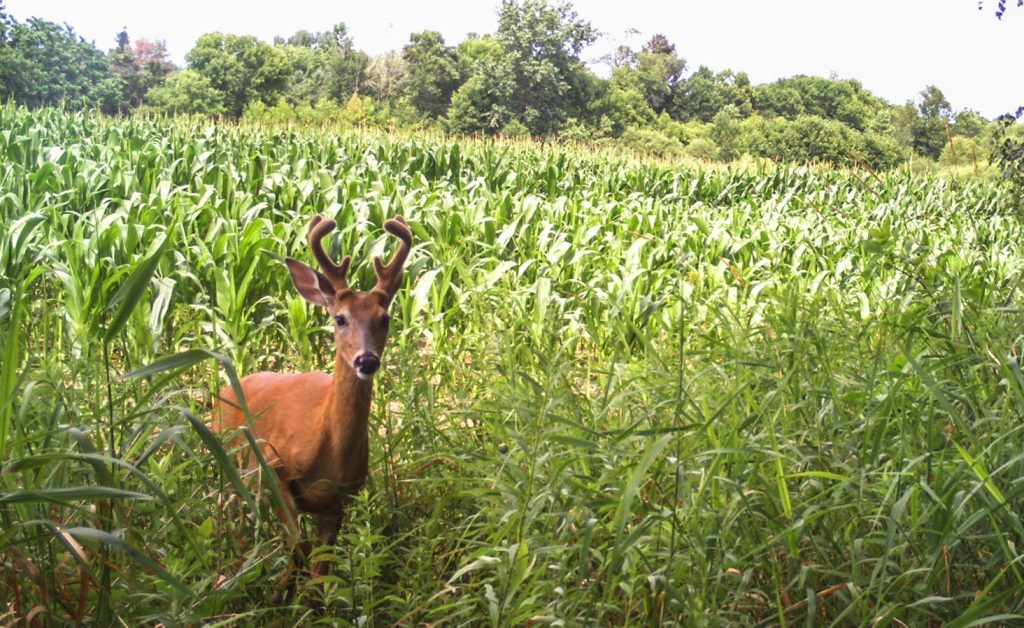A Scientific American piece on neonicotinoid insecticides begins with a fascinating story about a wildlife rehab clinic in Montana. In the 1990s, a “bizarre trend” was noticed — an unusual number and diversity of birth defects in roadkill deer and other big game autopsied at the clinic.
Scientists at the clinic pondered what could have possibly changed enough to trigger such a dramatic change in birth defects. One possible explanation was exposures to the new neonic insecticides being applied in the area, a hypothesis published in a 2012 a paper.
The rehab clinic’s observations caught the eye of a research team at South Dakota State University, who conducted an experiment at their Wildlife and Fisheries Captive Facility on white-tail deer. They dosed female deer and their fawns with imidacloprid, the most widely used of the new neonics, and compared birth outcomes to a control population that was not exposed to the insecticide. They identified several health impacts in the dosed group, including diminished fawn survival, lower body and organ weight, and even reduced activity level in both females and fawns.
Also, the researchers were surprised to find that their control group also had detectable neonics in their bodies – even though they were never dosed. The implication — this class of insecticides is becoming ubiquitous in the environment, and helps explain those initial observations from the rehab center in Montana.
Unfortunately, this all makes sense, as Scientific American reports, because “90 percent of corn and 50 percent of soybeans in the United States are treated with neonicotinoids” (Daley, 2019). The insecticides are soaked into the seeds, and then move systemically through the plant growing from treated seed. Delivering pesticides via seed treatments requires far less active ingredient per acre, and avoids most, above-ground non-target exposures. But only a small amount – 2% to 20% – of the neonics applied as seed treatments ends up in the plant, so where does the rest of it go?
And then there is one more important piece to this scientific puzzle – the half-life of these chemicals is up to 1,400 days, long enough for it to bioaccumulate in the environment after repeated, annual applications. This helps explain why research teams worldwide are publishing so many papers on the adverse impacts of neonicotinoids on deer, bees, birds, small mammals, and some large ones too.
While the European Union and some states are taking action to reduce reliance on neonics, the U.S. EPA is in a neonic holding pattern — neither approving major new uses, nor limiting existing ones. The pesticide industry stands firm by their assurances that neonics are the best, and safest alternative for control of a variety of above and below-ground insects.
Scientists are close to explaining at a mechanistic level how even very-low levels of neonic exposure to bees alters bee behavior and undermines hive integrity. Presumably, even the U.S. EPA will not stand idly by if both domestic and wild bee populations continue their 15-plus year decline.
Sources:
Berheim, E. H., Jenks, J. A., Lundgren, J. G., Michel, E. S., Grove, D., & Jensen, W. F., “Effects of Neonicotinoid Insecticides on Physiology and Reproductive Characteristics of Captive Female and Fawn White-tailed Deer,” Scientific Reports, 2019, 9(1), 4534. DOI: 10.1038/s41598-019-40994-9.
Daley, Jim, “As Pesticide Turns Up in More Places, Safety Concerns Mount,” Scientific American, Date published: 04/30/2019, Date accessed: 05/10/2019.

